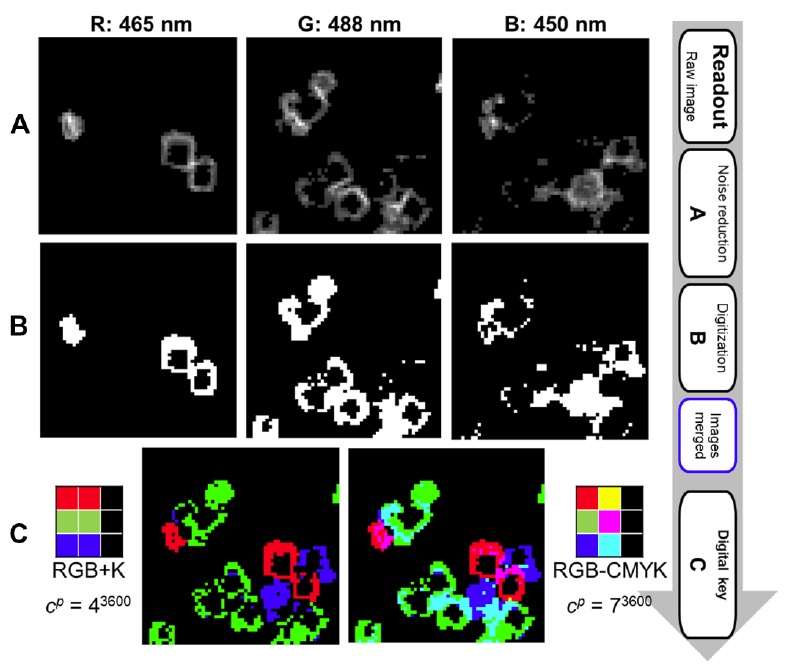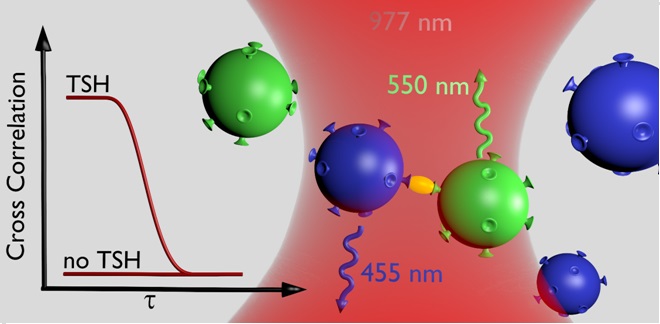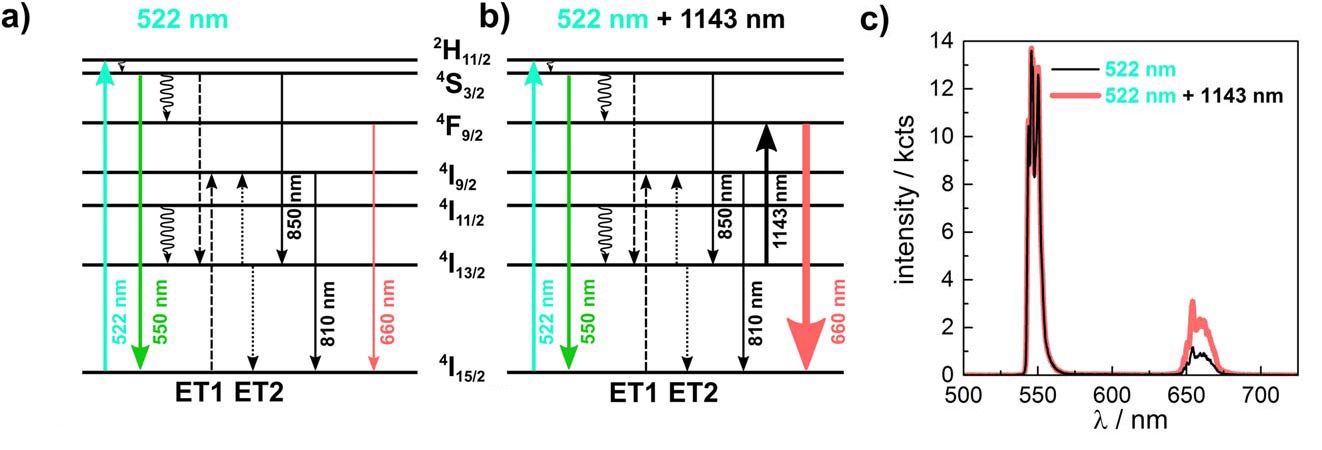Lanthanide-Imaging
On this page you can find information on the efforts in imaging lanthanide emission. Most of the work has been done in collaboration with Thomas Just Sørensen (University of Copenhagen) and Tero Soukka (University of Helsinki).
Excitation based selective Lanthanide emission for the creation of PUFs.
Using 450 nm (Dy3+), 465 nm (Eu3+) and 488 nm (Tb3+), three different lanthanides, embedded in a zeolite host, can be selectively excited by direct excitation. This leads to three excitation based read-out channels that can be used to create and digitize physically unclonable functions (PUFs) as illustrated in the figure below. Even a limited number of digitized pixels (e.g. 60 x 60) leads to an extremely large encoding capacity. The PUFs, together with the digitized key can find applications in anti-counterfeiting applications.
 Figure taken from "An optical authentication system based on imaging of excitation-selected lanthanide luminescence" Science Advances 2018, 4, e1701384.
Figure taken from "An optical authentication system based on imaging of excitation-selected lanthanide luminescence" Science Advances 2018, 4, e1701384.
Direct excitation of Lanthanides for bio-imaging.
Despite the very low extinction coefficient, we demonstrated that direct excitation of Eu3+ and Tb3+ is possible and allowed us to visualize Lanthanides bound to the Glycocalyx of Chinese Hamster Ovary (CHO) cells. More information can be found at: "Luminescence from lanthanide(III) ions bound to the Glycocalyx of Chinese Hamster Ovary cells" Chem. Eur. J. 2018, 24, 11885–11889.
Up-conversion cross-correlation spectroscopy for analyte detection in high auto-fluorescent media.
We demonstrate that up-conversion cross-correlation spectroscopy (UCCS) could find applications in the determination of analyte concentrations in a sandwich immunoassay. Advantages of the up-conversion excitation pathway are the zero background signal in comparison to the very high autofluorescence of the blood serum upon direct excitation.

Figure taken from: "Up-conversion Cross-Correlation Spectroscopy of a Sandwich Immunoassay" Chem. Eur. J. 2018, 24, 9229 – 9233.
Selective Lanthanide signal recovery by emission modulation.
Using two laser wavelength, 522 nm for direct excitation and 1143 nm for repopulating the 4F9/2 state, we can modulate the red emission of Erbium ions. The modulated signal allows for the creation of background free imaging when plotting only the signal related to the applied 1143 nm laser modulation frequency.
 Figure taken from "NIR Induced Modulation of the Red Emission from Erbium Ions for Selective Lanthanide Imaging" Methods Appl. Fluoresc. 2018, 6, 044001.
Figure taken from "NIR Induced Modulation of the Red Emission from Erbium Ions for Selective Lanthanide Imaging" Methods Appl. Fluoresc. 2018, 6, 044001.
